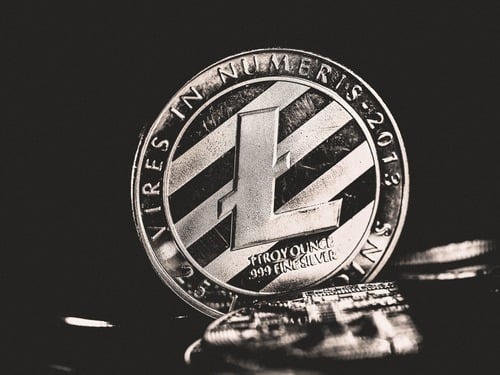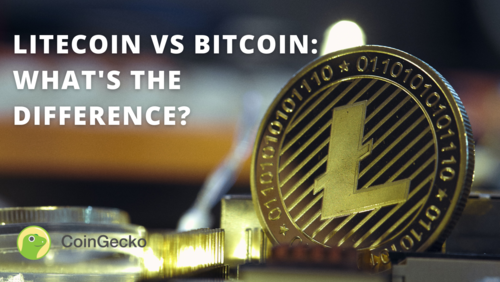This is a sponsored cryptocurrency guide by eToro.
In our previous eToro beginner’s guide, we covered Bitcoin and Ethereum and the basic concepts behind it. In addition to Bitcoin, there are more than 3,000 cryptocurrencies. In this beginner’s series, we will cover some of the most important cryptocurrencies in the market. This guide looks at Litecoin.
Litecoin’s History

Charlie Lee during an interview with Coin Congress. Source: everipedia.org
Litecoin is one of the earliest forks of Bitcoin, borrowing heavily from Bitcoin’s open-source codebase. It was created and released on GitHub by ex-Google and Coinbase employee Charlie Lee on 7 October 2011. The first block of Litecoin, also known as the genesis block, was mined on 13 October 2011. This launch date was chosen based on the results of a poll of early Litecoin supporters.
Litecoin was not the first coin that Charlie Lee created. Prior to Litecoin, he experimented on a coin called Fairbrix, which is a fork of Tenebrix. However, it did not take off due to a software bug in the source code from which it forked.
Interestingly, Litecoin did not have a whitepaper. Lee stated that Litecoin aims to be the “Silver to Bitcoin’s Gold” and to achieve all of Bitcoin’s noble goals while taking a more “lightweight” approach and using a different hashing algorithm.
One quirky detail of the Litecoin blockchain is that the Litecoin Genesis Block has a hidden message, much like Bitcoin’s Genesis Block. If you decode the raw Hex data into ASCII format, you will see the message “NY Times 05/Oct/2011 Steve Jobs, Apple’s Visionary, Dies at 56”. This was the headline of The New York Times on 5 October 2011.
Litecoin Details
All Litecoin public key addresses start with either an “L” or an “M”. There is a distinction between the “L” and “M” addresses. “L” addresses are legacy addresses that do not support SegWit, while “M” addresses are compatible with SegWit.
SegWit (Segregated Witness) is a protocol upgrade that frees up more space on the blockchain by separating signature data from transactions. SegWit also fixes the transaction malleability problem which now allows for the Lightning Network to be deployed. With Lightning Network, instant payment is possible on Litecoin at a very low cost.
Litecoin, as the “lightweight” version of Bitcoin, shares many similarities with Bitcoin. Litecoin has the same unit divisibility as Bitcoin. The smallest unit of Litecoin is known as litoshi, which equals one hundred millionth of a single litecoin, or 0.00000001 LTC.
Litecoin’s inflation rate is also similar to that of Bitcoin. Mining rewards reduce by 50% approximately every 4 years. In Bitcoin’s case, mining rewards are halved every 210,000 blocks. However, Litecoin’s mining rewards are halved every 840,000 blocks.
Litecoin has a block time that is 4 times shorter than that of Bitcoin. Its block time is 2.5 minutes as compared to Bitcoin’s block time of 10 minutes. Litecoin also has an issuance limit of 84 million LTC, which is 4 times higher than Bitcoin’s 21 million BTC.
Currently, 58 million litecoin have been mined. This represents nearly 70% of all litecoin that will ever be created.
Scrypt Mining

When Litecoin was launched back in 2011, miners had already begun using rudimentary ASICs (Application Specific Integrated Circuits) to mine bitcoin. Some supporters felt that this strayed from Satoshi Nakamoto’s (the creator of Bitcoin) original “1 CPU 1 vote” vision and sought to experiment with a way to penalize mining from anything but a CPU.
Charlie Lee echoed this viewpoint when he implemented the Scrypt hashing algorithm for Litecoin’s Proof-of-Work consensus algorithm. Scrypt differs from Bitcoin’s SHA-256 in that mining it requires more memory resources than just processing power. This makes Scrypt mining more resistant to ASICs.
However, using Scrypt to keep away ASICs was not a permanent solution. As Litecoin mining became more profitable, Lee foresaw the emergence of Scrypt ASICs. Presently, there are ASICs that specialize in mining Scrypt cryptocurrencies such as Litecoin.
The Value of Litecoin
What started as a fun experiment by Charlie Lee quickly became a cryptocurrency with many niche use cases and its own community of supporters. For one thing, Litecoin implemented SegWit and Lightning Network before Bitcoin did, serving as a testbed for the Bitcoin blockchain. Bitcoin developers can monitor the effects of SegWit and Lightning Network before implementation on Bitcoin.
Another appealing facet of Litecoin is its relatively low transaction fee and faster transaction speed. Because Litecoin processes a block 4 times faster than Bitcoin does, it can confirm transactions at a faster rate than Bitcoin. Similar to Bitcoin, Litecoin fees are also paid in a “per-byte” manner. It doesn’t matter if you send 1 litecoin or 20,000 litecoin; what matters is how much information was necessary to make the transaction. So, rather than having to pay hefty fees in Bitcoin for a small transaction, one can use litecoin and benefit from its lower fees.
Conclusion
Cryptocurrencies such as Litecoin play an important role in the development of the public blockchain ecosystem. As proven with SegWit, many features are tested on smaller altcoins before they are implemented on larger blockchains like Bitcoin. This allows new features to be battle-tested so that all bugs can be located and rectified.
This is a sponsored cryptocurrency guide by eToro.

Market Research Analyst at CoinGecko and cryptocurrency fan since 2014. I like to geek out about things in the crypto space. You can read some of my stuff at kristiankho.com. Follow the author on Twitter @Kristian_Kho





 Or check it out in the app stores
Or check it out in the app stores
